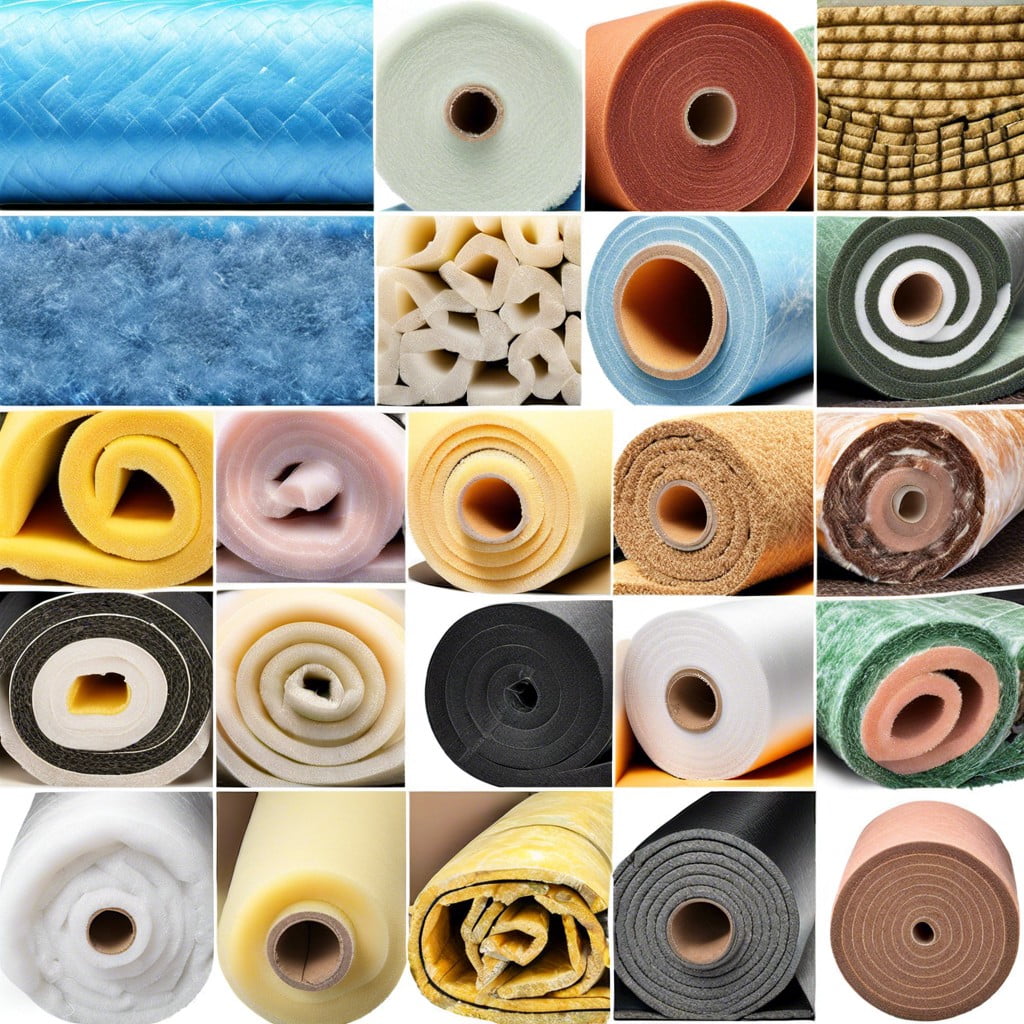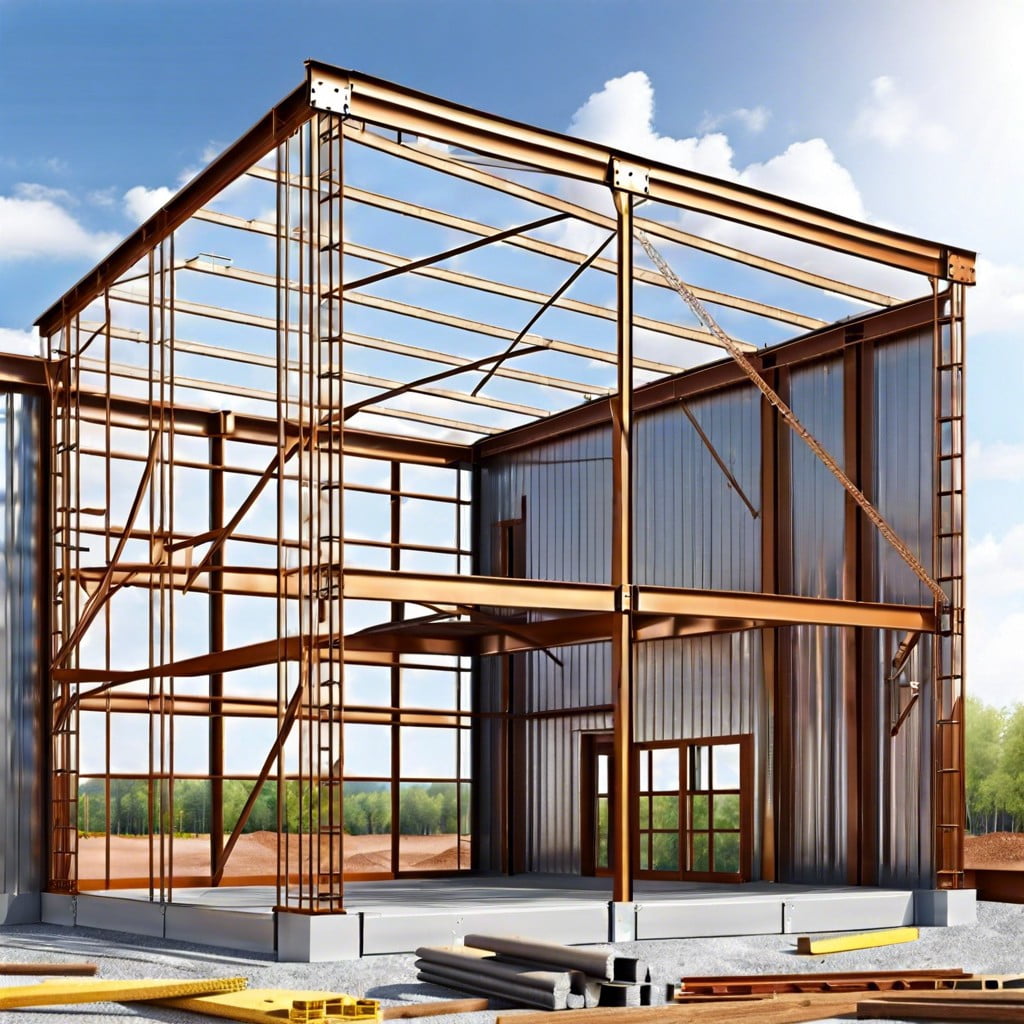Explore the process of insulating a metal building roof because efficient insulation is pivotal for maintaining a conducive internal environment and reducing energy costs.
Insulating a metal building roof is a crucial step in ensuring energy efficiency and comfort within your structure. This process involves several key steps, including determining the type of insulation material to use, preparing the roof surface, installing the insulation, and sealing it properly to prevent moisture infiltration.
Whether you’re leaning towards spray foam, fiberglass, or reflective foil, each material has its unique installation methods and benefits.
Read on to delve into the specifics of these insulation types, their installation process, and how to choose the best fit for your metal building roof.
Key takeaways:
- Heat Gain/Loss Prevention: Proper insulation maintains stable internal temperature.
- Noise Reduction: Insulation acts as a sound barrier.
- Moisture Barrier: Insulation prevents condensation and rust/corrosion.
- Energy Saving: Insulation reduces energy consumption and costs.
- Improved Indoor Air Quality: Insulation controls moisture and pollutants.
Understanding Metal Building Roof Insulation
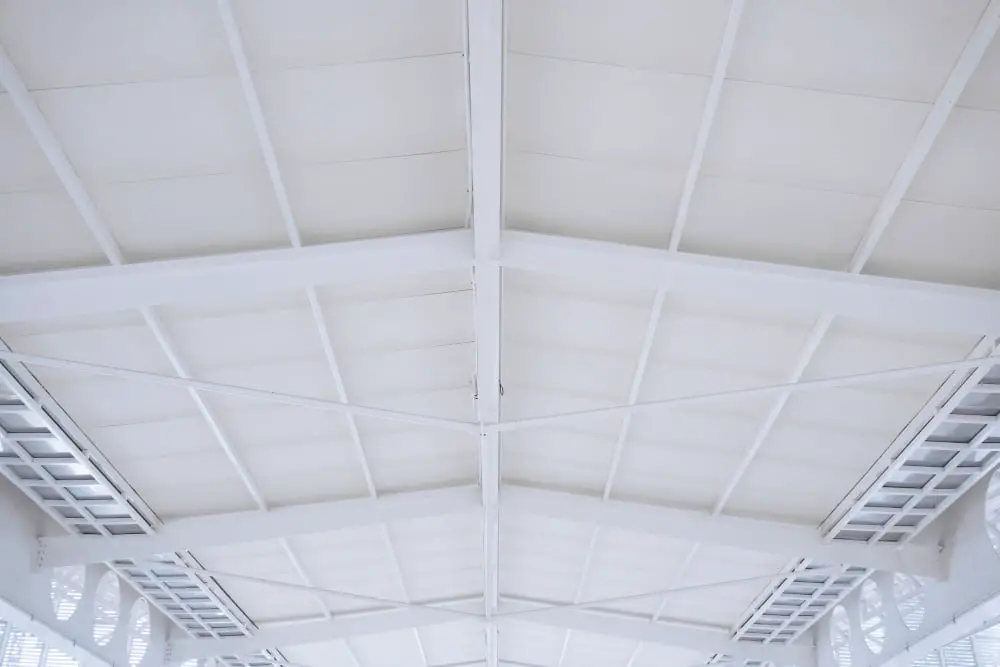
When it comes to insulating metal buildings, the roof plays a vital role. It’s essential to understand the functioning and importance of insulation.
1. Heat Gain/Loss Prevention: Proper insulation can prevent heat from escaping during winter and keep the heat out in summer, maintaining a stable internal temperature.
2. Noise Reduction: Insulation material can act as a sound barrier, reducing external noise which is an important aspect in workspaces or residential buildings.
3. Moisture Barrier: In addition to temperature control and noise reduction, insulation also serves as a moisture barrier, preventing condensation, which often leads to rust and corrosion in metal buildings.
4. Energy Saving: An adequately insulated metal roof helps reduce the consumption of energy which in turn results in significant cost savings over time.
Understanding these basic concepts proves valuable before choosing the type and method of insulation that best fits your building’s needs.
Why Insulate a Metal Building Roof
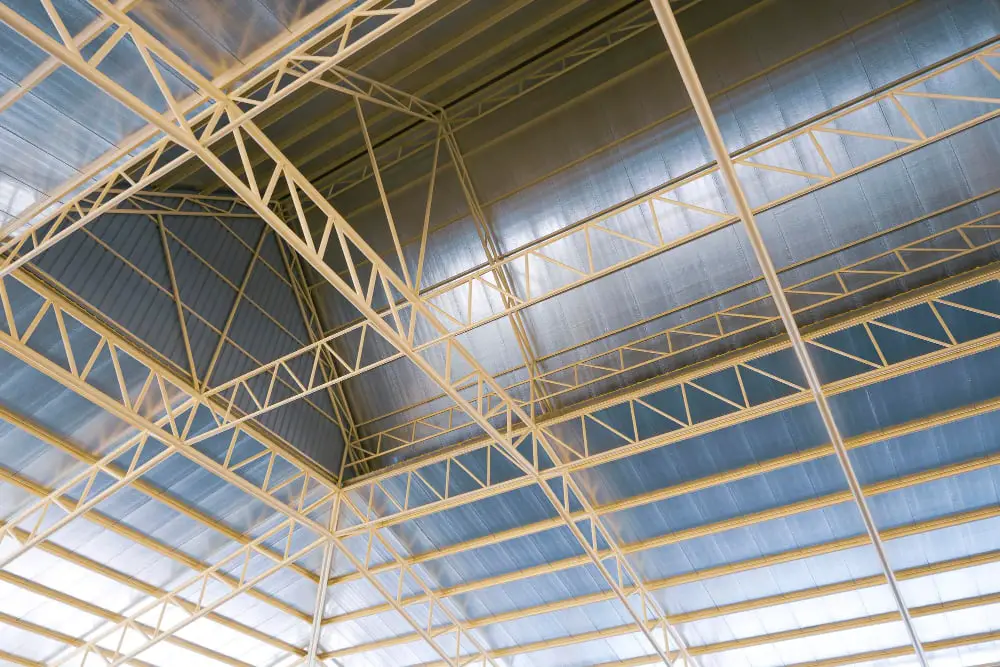
Insulation plays a crucial role in controlling the interior climate of a metal building. As metal roof panels can naturally heat up under the sun, insulation acts as a barrier, preventing unnecessary heat transfer from the roof to the inner atmosphere. Consequently, this keeps the interior cool in summer.
In the winter months, the story is somewhat the reverse but equally as important. Insulation helps to keep the interior warmth from escaping quickly through the metal roof, thus providing a warmer environment.
In addition, insulation significantly reduces the noise that can be amplified by a metal roof during rainfall. Lastly, the condensation that can form on metal surfaces poses a rust risk; a well-insulated roof mitigates this risk by reducing the temperature difference between the inside and the outside.
To sum up, the fundamental reasons to insulate a metal building roof are to improve thermal comfort, soundproofing, and longevity by protecting it from condensation.
Purposes & Benefits Of Roof Insulation In Metal Buildings
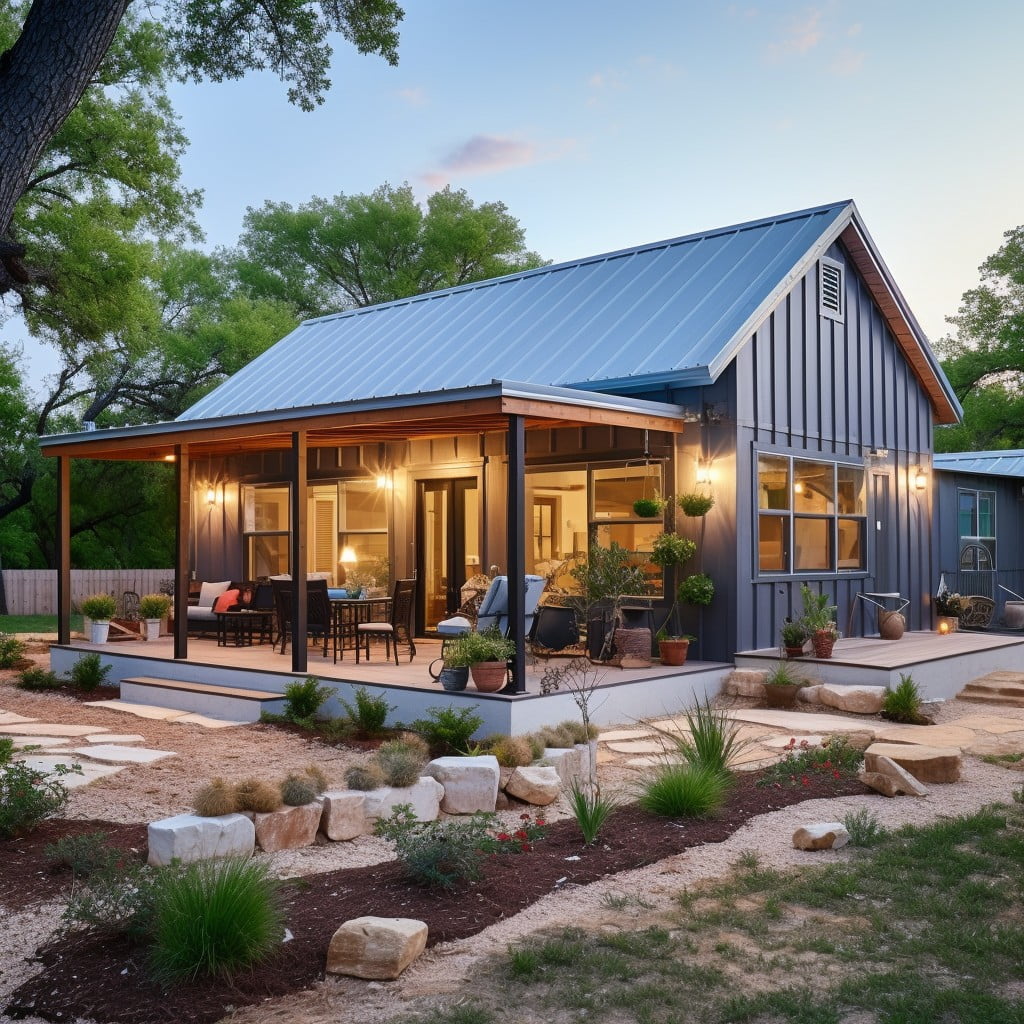
Roof insulation serves a dual purpose in a metal building. Firstly, it acts as a barrier, reducing heat transfer between the inside and outside environments. This function is particularly important during summers, when the insulation minimizes heat gain, and winters, when it prevents heat loss, thus enhancing the structure’s energy efficiency. It curtails the frequency and duration of HVAC (heating, ventilation, and air conditioning) systems in use, directly reducing energy bills.
Secondly, it aids in condensation control, a crucial factor in many metal structures. Without proper insulation, condensation can accumulate on the building’s interior, leading to corrosion, mold, and mildew growth. By maintaining a steady temperature within the structure, insulation mitigates these issues, extending the building’s life span.
Lastly, insulation improves the acoustics within the metal building by absorbing sound and reducing noise transfer. This advantage is particularly beneficial in metal structures used as workshops, manufacturing facilities, or residential homes, where silence or an optimum noise level is appreciated.
What Are R-Value, U-Value, and Perm Ratings For Metal Buildings
To start, the R-Value measures the insulation’s thermal resistance–essentially, how well the insulation constrains heat flow. A higher R-Value indicates better thermal resistance, thus superior insulation efficiency. Notably, climate and local building codes often dictate the recommended R-values.
On the other hand, the U-Value, measures the flow of heat through an insulator. Unlike the R-Value, a lower U-Value indicates better insulation as it shows less heat transmission.
Lastly, Perm Ratings assess an insulation material’s permeability to water vapor. Lower Perm ratings represent better resistance to vapor, reducing the risk of dampness, rust, and other moisture issues. Selecting insulation materials with appropriate R-Values, U-Values, and Perm Ratings is crucial for best insulation performance and durability of the metal building.
Energy Efficiency of Insulated Metal Roof

When it comes to reducing energy costs, insulating your metal building roof plays a pivotal role. Proper insulation acts as a barrier, minimizing the passage of heat. During winters, it keeps the warmth in, and in the summers it prevents it from permeating into the building. This results in a substantial decrease in energy consumption for heating and cooling purposes, sparing you from hefty utility bills.
A well-insulated roof can stabilize indoor temperatures, providing you with a comfortable living or working environment. Moreover, it assists with the strain heat transfers put on HVAC systems, expanding the lifespan of these costly appliances.
Efficient roof insulation also contributes to a reduced carbon footprint. As less energy is needed to heat or cool the building, fewer fossil fuels are burned, resulting in lower greenhouse gas emissions. Therefore, from an environmental preservation standpoint, insulating your metal building roof is not just beneficial, it’s critical.
Remember, while the upfront costs of roof insulation may seem substantial, the long-term energy cost savings and environmental benefits make it a worthwhile investment.
Indoor Air Quality and Metal Building Roof Insulation

Insulating the roof of a metal building can drastically improve the indoor air quality. This is due to several beneficial factors brought about by proper insulation.
First, adequate insulation effectively controls moisture levels, reducing the risks of mold and mildew growth. These potential health hazards are common in poorly insulated buildings that allow excess moisture in.
Secondly, the insulation materials act as a barrier for dust and external pollutants. Materials such as fiberglass, cellulose, or spray foam tend to seal crevices, lowering the chances of dust or pollutant particles entering the building.
Lastly, energy-efficient insulation reduces the dependency on heating or cooling appliances, contributing less dry air or excessive humidity, respectively. Balanced indoor temperature contributes to a more comfortable environment, significantly enhancing indoor air quality.
In essence, an insulated roof ensures a healthier indoor environment with reduced allergens, balanced humidity and temperature levels, and less reliance on climate control systems. It’s an essential strategy not just for energy efficiency but also for a healthier indoor living or working space.
Types of Metal Building Roof Insulation
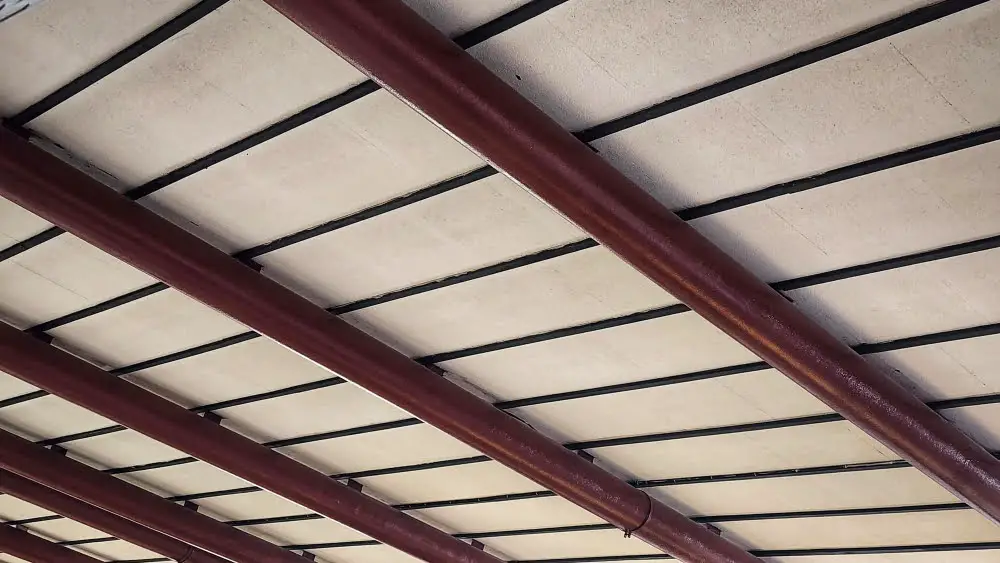
Let’s delve into the various insulation options available to you.
To start, Single Layer Faced Fiberglass Blanket Insulation is a highly efficient type, offering excellent thermal regulation and noise reduction. It is cost-effective and easy to install, making it perfect for large buildings.
The Sag and Bag Two-Layer System is a double-layered insulation solution, combining a custom sagging fiber blanket with an exterior vapor barrier. This system provides incredibly high energy efficiency and significantly reduces the likelihood of condensation.
Next up, Rigid Board Insulation. Constructed from foam plastics, it’s highly valued for its supreme rigidity and thermal effectiveness. It’s also tailored for addressing unique demands such as high load-bearing requirements or the need for high R-values.
Spray Foam Insulation behaves slightly differently. It seals all cracks and gaps in the metal structure when sprayed onto the surface. It has a high R-value per inch, making it an excellent choice where space is limited.
Finally, Reflective Insulation consists of reflective aluminum foil and plastic film layers. It works to improve energy efficiency by bouncing back radiant heat, keeping the environment cooler during hot periods, and warmer during cool periods.
Single Layer Faced Fiberglass Blanket Insulation
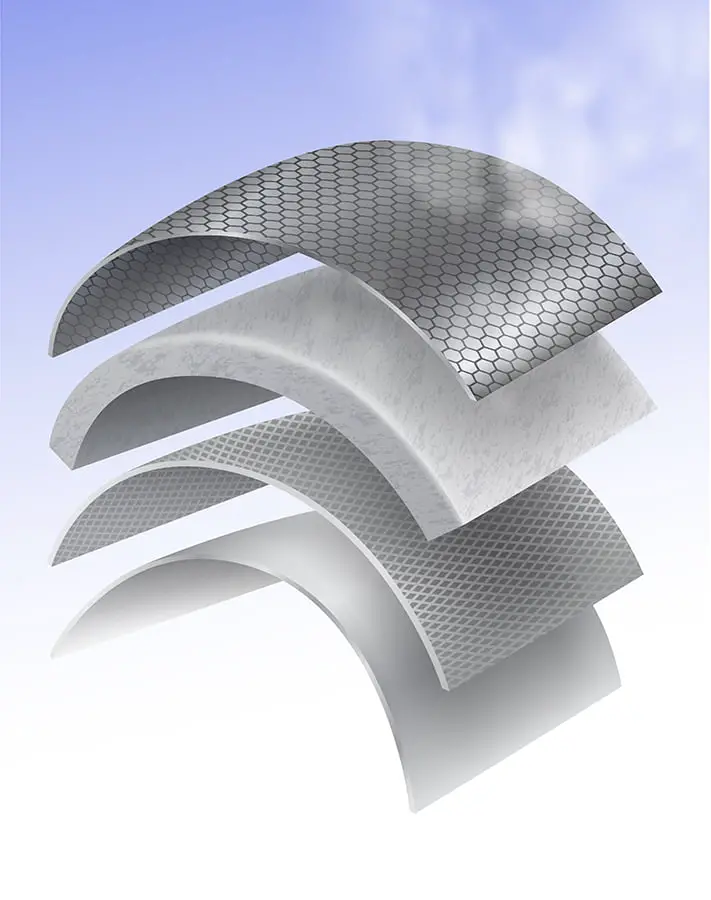
Designed for large, flat surfaces, this type of insulation consists of a vapor retarder laminated to a high-strength fiberglass blanket. It’s installed over the roof purlins or on the exterior of the girt column, usually secured in place by the metal roofing or siding panels.
Due to its continuous layering, there’s no need to worry about leaks through insulation gaps. This makes it an excellent choice when addressing temperature changes and condensation issues in metal buildings.
Notably, while it offers good thermal values, it does require careful handling and installation to maintain effectiveness.
Sag and Bag Two-Layer System for Metal Roof Insulation
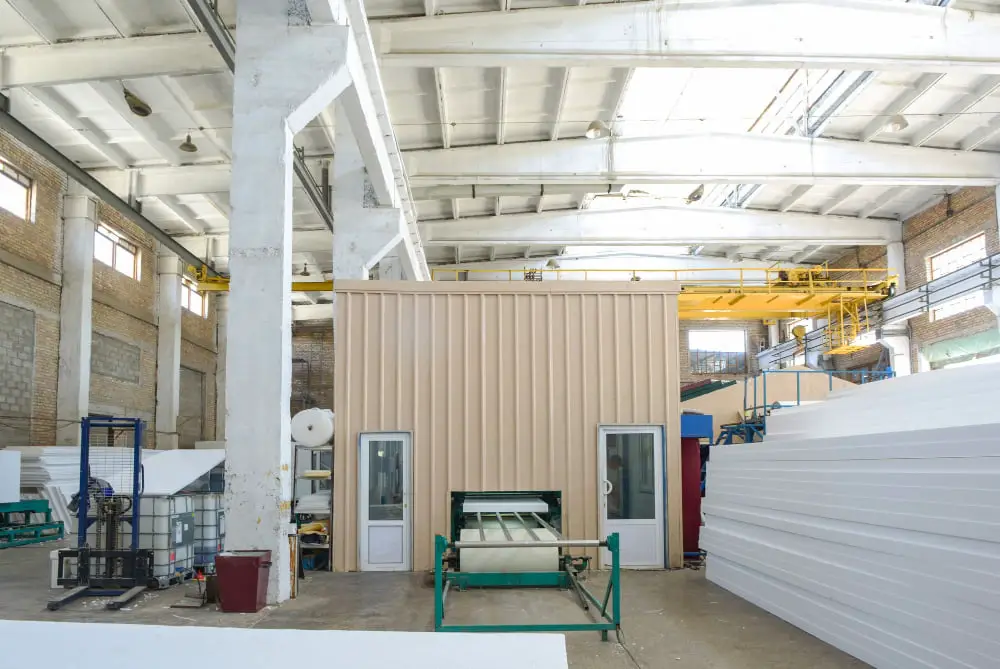
The Sag and Bag system is widely utilized because it offers superior protection and insulation. The two-layer structure forms an exceptionally strong barrier for climate control. The system’s initial layer is a sagging insulation that is draped between the building’s roof purlins. This sagging effect creates a pocket of dead air, significantly enhancing the insulation’s effectiveness.
The second layer, the ‘bag,’ is fastened over the top of the first layer across the entire span of the purlins. This fitted installment prevents any additional heat or cold transfer through the building’s roof.
Moreover, the Sag and Bag system provides the added benefit of condensation control, as it reduces the chances of warm, moist interior air coming into contact with the cooler exterior roof panels. With its numerous advantages, the Sag and Bag is one practical double-layer method of metal roof insulation.
Rigid Board Insulation for Metal Building Roof
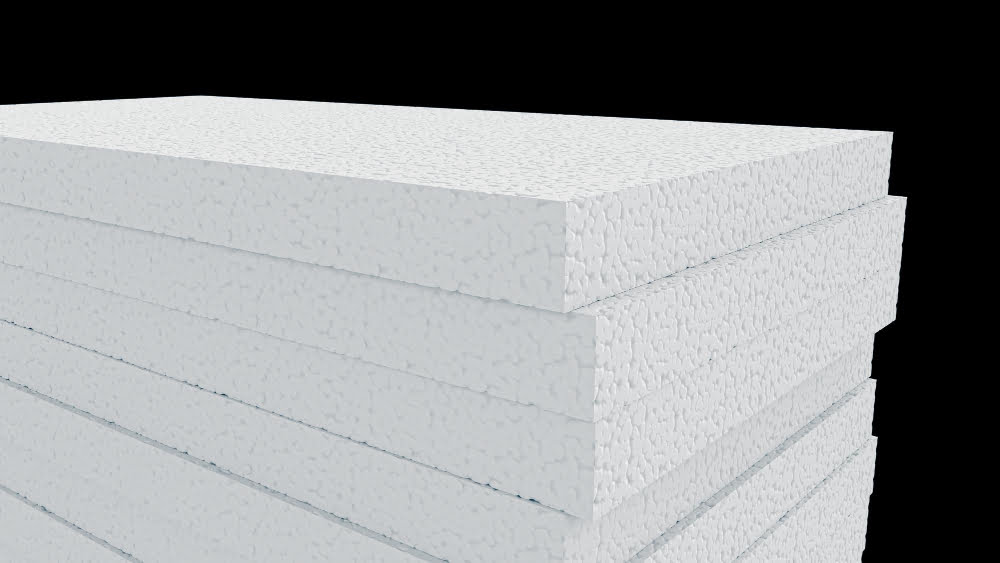
Composed from materials like polyurethane, polystyrene, or fiberglass, rigid board insulation provides efficiency and durability for metal building roofs. This insulation type features high R-values, reaching up to R-7 per inch, making it suitable for thermal practices and providing excellent heat resistance.
Installation is simple, with the rigid boards trimmed to fit the exact measurements, thus eliminating unnecessary gaps for effective insulation. One disadvantage though is that covering the large surface area of a roof would require a substantial quantity of boards, hence, the costs can add up significantly.
In terms of application, these boards can be installed either under the metal roof panels or on top of the existing metal roof. However, proper sealing of joints between boards is essential to prevent thermal bridging. Nonetheless, despite its somewhat extra cost, its high R-value and straightforward installation make rigid board insulation an effective choice for insulating metal building roofs.
Spray Foam Insulation for Metal Building Roof
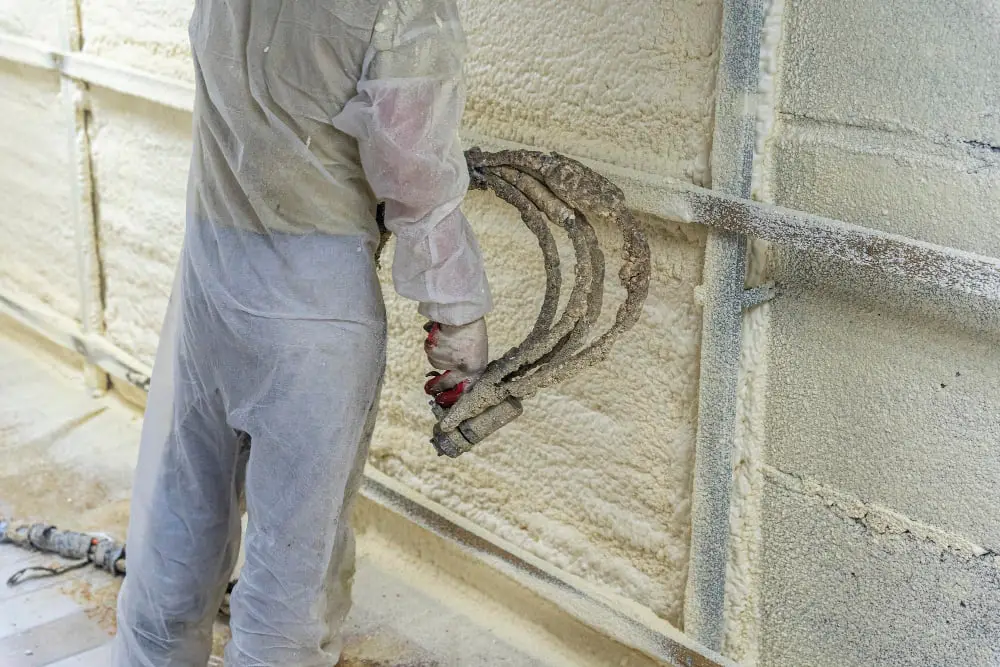
Spray foam insulation offers a two-in-one solution for your metal roof. It brings together the functions of insulation and air sealing. Let’s dive deeper into its attributes:
1. Seamless Application: Unlike other forms of insulation, spray foam provides a firm and even layer of protection. It adheres to the roof’s surface, reducing the possibility of gaps or air leaks.
2. High R-value: This form of insulation touts a high R-value per inch, meaning it offers excellent thermal resistance. It aids in maintaining indoor temperature, hence reducing energy costs.
3. Moisture Barrier: Not only does it resist heat, but spray foam also repels water. This quality makes it particularly useful in areas with high humidity or heavy rainfall.
4. Longevity: Spray foam tends to last longer than traditional forms of insulation, leading to saving money in the long run.
5. Structure Strengthening: Due to its firm and sturdy nature, spray foam can increase the structural integrity of the metal building roof.
Despite these benefits, it’s crucial to have a professional install spray foam insulation, owing to its potentially tricky application. Incorrect installation can reduce its effectiveness and even trigger potential health hazards.
Reflective Insulation for Metal Building Roof
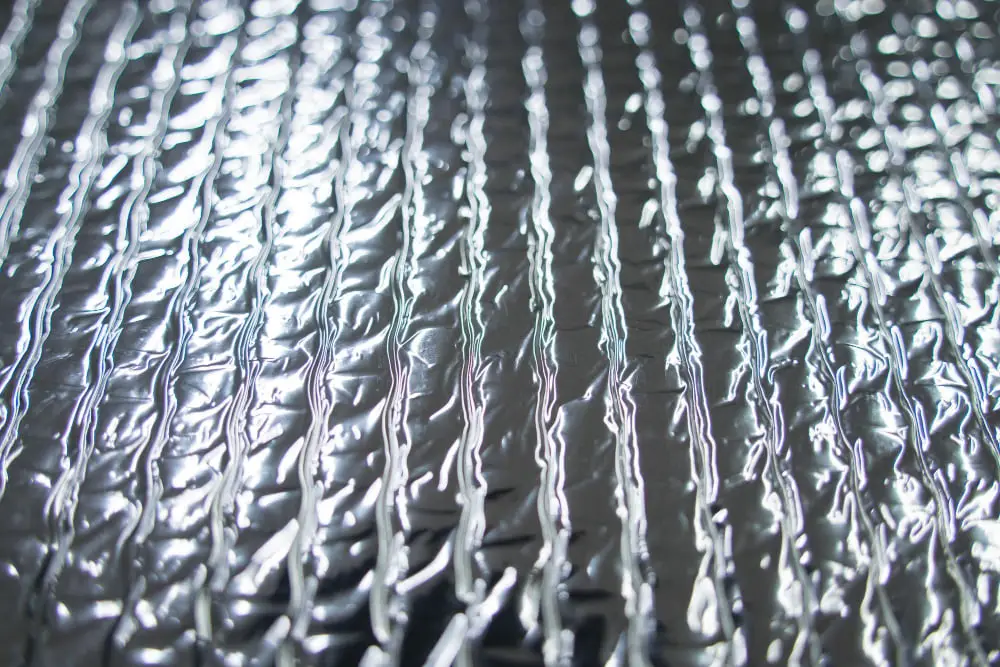
Reflective insulation showcases several key benefits. Primarily, it battles thermal transfer via radiation, aiding in the decrease of radiant heat gain, prevalent concerns in metal buildings. The insulation comprises multiple layers, typically an outer layer of aluminum foil, earning it the name ‘radiant barrier.’ This unique characteristic deflects radiant heat, contrasting other insulation types that absorb it.
Using this type, sunlight’s warm rays bounce off the metallic surface rather than permeating the building, thereby controlling temperature fluctuations. Consequently, it’s most crucial in regions with extended periods of warm weather. In addition, other components of the layers often include a bubble or foam core enhancing insulation properties.
Successful implementation calls for the correct positioning with a free space on the foil side, allowing it to reflect away the radiant heat effectively. The comprehensive nature of this insulation makes it suitable, notably when installed alongside other insulation types for an added layer of heat protection.
Installation methods vary, offering flexibility, ranging from self-adhesive backing for simpler application to more traditional methods like fastening to purlins and girts. However, do note that its effectiveness could decline in the long run as dust accumulation might lessen the reflective capabilities. Routine cleaning helps to maintain efficiency. Despite that, reflective insulation remains a smart, beneficial choice.
What Is the Most Cost-Effective Way to Insulate a Metal Building Roof

As an efficient approach, fibreglass insulation offers a sensible balance between cost and performance. Despite being among the most affordable options, it exhibits impressive thermal resistance, contributing greatly to energy cost-saving benefits in the long term.
If looking to invest more upfront for high-performance insulation, rigid board and spray foam insulation prove to be worthy considerations. The rigid board offers superior R-values per inch and can be customized according to specific needs, while spray foam insulation, by filling in all gaps and hard-to-reach spots, improves the building’s air-tightness drastically help lower heating and cooling expenditures over time.
For additional cost-effectiveness, reflective insulation can be strategically coupled with the aforementioned options. By reflecting radiant heat, it enhances the efficiency of your primary insulation material, promoting optimized energy management within your metal building.
Keep in mind each building has unique insulation needs, and prices can fluctuate based on a variety of factors, including material costs and labor charges. Consulting with an insulation expert or professional can guide you towards making a cost-effective choice that perfectly suits your requirements.
FAQ
How do you insulate the roof of an existing metal building?
To insulate the roof of an existing metal building, 1″ wide steel bands are screwed onto the underside of the metal purlin 30″ apart to create a grid system, which serves as a placement for the insulation.
Can you put insulation directly against metal roof?
Yes, insulation can be placed directly against a metal roof; popular choices such as fiberglass batts are versatile and can be custom-cut for particular requirements.
What is the cheapest way to insulate a metal building ceiling?
The most cost-effective method to insulate a metal building ceiling is by using fiberglass, due to its low installation cost and high R-value.
What type of insulation is most effective for metal building roofs?
Reflective foil insulation is most effective for metal building roofs as it reflects radiant heat, significantly reducing energy costs.
Is spray foam insulation a suitable option for metal building roofs?
Yes, spray foam insulation is a suitable and commonly used option for metal building roofs because of its durability, excellent thermal resistance, and seamless application.
What are the potential drawbacks of not insulating a metal building roof?
Potential drawbacks of not insulating a metal building roof can include energy inefficiency, condensation problems, and uncomfortable indoor temperature extremes.
Recap



